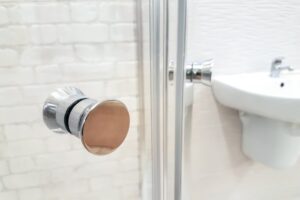Your home is your personal space – it should be comfortable, sustainable, efficient, and relatively inexpensive to run – which won’t be the case if it’s not energy-efficient.
You can improve your home’s energy efficiency either by retrofitting energy-saving features or incorporating energy efficiency when you renovate.
Here’s how.
Table of Contents
Energy Audits
To improve your energy efficiency, you must start with an energy audit. Enquire with your utility company to find out if they offer discounted rates, or you can contact a professional energy auditor.
Once your home has undergone an energy audit, you’ll have a better idea of what you’re working with and how you can improve your home’s performance. This applies whether you’re retrofitting or remodeling.

Retrofitting
Believe it or not, you don’t have to start from scratch to make your home more energy-efficient – retrofitting can make the best use of what you already have. It’s a more cost-effective solution than a major remodel or renovation.
Seal, Replace, and Insulate
Did you know that around 60% of the energy your home uses for heating in winter and cooling in summer is wasted if it’s not insulated correctly?
Installing door and window seals and chimney dampers is relatively simple to do, especially in older houses. You should also seal up old wall vents and replace exhaust fans with self-sealing ones.
It would help if you also weatherized the walls, floors, basement, attic, and crawlspace – which means adding more insulation and sealing any air leaks. You should also inspect your roof and repair any damage and weatherstrip your doors and windows.
If you don’t already have fiberglass windows, you should consider replacing your existing windows with fiberglass frames. Fiberglass windows are much more energy-efficient than traditional double or single panes because they usually have three or four panes of glass. Between each pane is a tiny space that acts as another layer of insulation.
Making sure your home is weatherized and insulated correctly will make your home more comfortable when the weather conditions are extreme – and it will also save you money on your energy bill.
Lighting and Heating
The cost of lighting alone can equate to around a third of your electricity bill, but the good news is that you just need to replace your old incandescent bulbs with LED light bulbs to make your lighting more energy-efficient.
Replacing incandescent bulbs with LED bulbs can save you around $3 to $5 per year for every bulb you replace, and they can last for ten years or more.
Upgrading your existing water heater to a newer model can reduce your energy bill by around 15% because they are much more efficient. While the cost of a new water heater is anything between $700 and $3,000, you’ll reap massive savings in the long run. You might even want to invest in solar panels with KAST Energy to really cut your costs.
Appliances and Other Retrofits
If your appliances are more than ten years old, you should consider replacing them. With new technological advancements, home appliances are more energy-efficient than ever.
Although replacing all your appliances can be a costly exercise, something to bear in mind is that it’s only a matter of time before they will break down, and you have to replace them anyway.
To put it into perspective, the average refrigerator has a lifespan of around 13 years – if yours is that old, you can save about $125 every year by replacing it. Similarly, an energy-efficient washing machine can save you around $35 per year, and replacing your dryer can deduct a whopping $215 off your energy bill over its lifetime.
If your roof can house solar panels and receives enough sunlight, retrofitting them is one of the best ways to make your home more energy-efficient.
Although the initial cost is high (around $15,000 to $25,000), solar panels will pay for themselves in just a few years because they will drastically reduce or even eliminate your energy bill. You may qualify for tax benefits, too.
To reduce the energy consumption for heating and cooling your home, consider replacing your thermostat with a programmable one.
A smart thermostat will cost around $200, but you can control your home’s temperature more effectively. You can program a smart thermostat to keep the temperature cooler in summer or warmer in winter automatically, and you can also control it via an app when you’re not at home.
Renovating
If you decide to renovate your house for energy efficiency instead of retrofitting it, you can rectify any energy consumption issues and optimize your home in the process.
If you’re incorporating energy-saving features into your renovation project, now is the best time to make improvements. Optimizing your home’s performance sooner rather than later is the best way to save time and money.
Thinking about a few key aspects early in the design process will ensure that your home is comfortable and that your energy bill is reduced.
Orientation and Ventilation
Did you know that your house’s orientation can affect your energy consumption? For instance, if all your windows face south, you should consider northern glazing. With a renovation, you have an opportunity to keep cooler in summer and warmer in winter just by optimizing your home’s orientation.
Taking advantage of cooling breezes and natural ventilation by strategically placing your windows will also reduce how much you need to use your air conditioning.
Insulation
When it comes to energy efficiency, insulation is vital. Altering, removing, or adding walls presents a rare opportunity to invest in quality insulation – grab it while you can because you may never have a chance to enhance the insulation in the new parts of your home.
Similarly, choose the best insulating materials for your new construction project (like slabs, bricks, steel, and natural fibers such as wool, cotton, and straw), and opt for insulation facings to act as an effective air barrier.
Energy Rating
Before you start your renovation, you should consult with a professional to see how energy-efficient your home is already and how you can improve it. Check power to choose and get an energy rating before you begin construction, as well as an estimated energy rating for when it’s completed.




